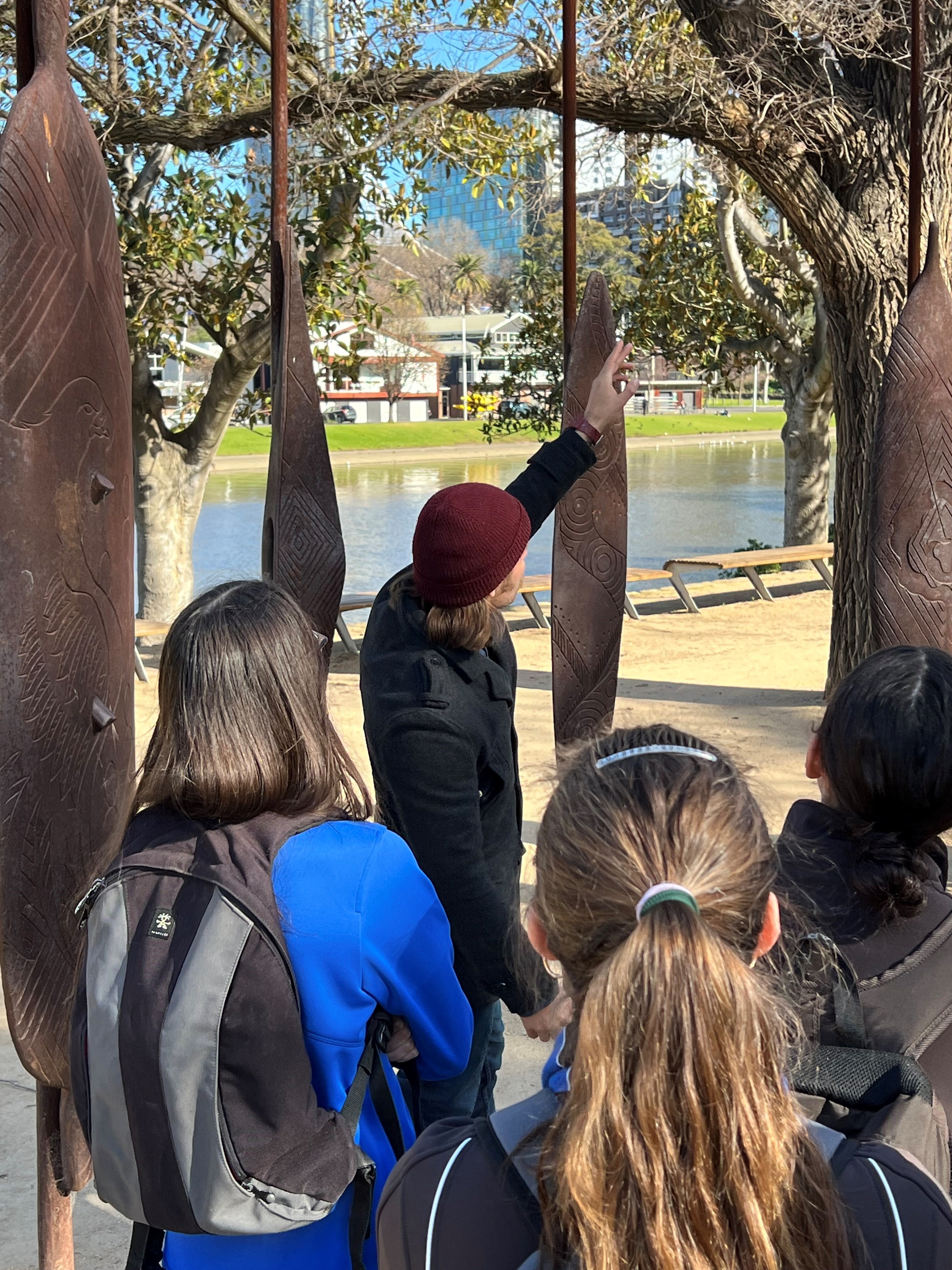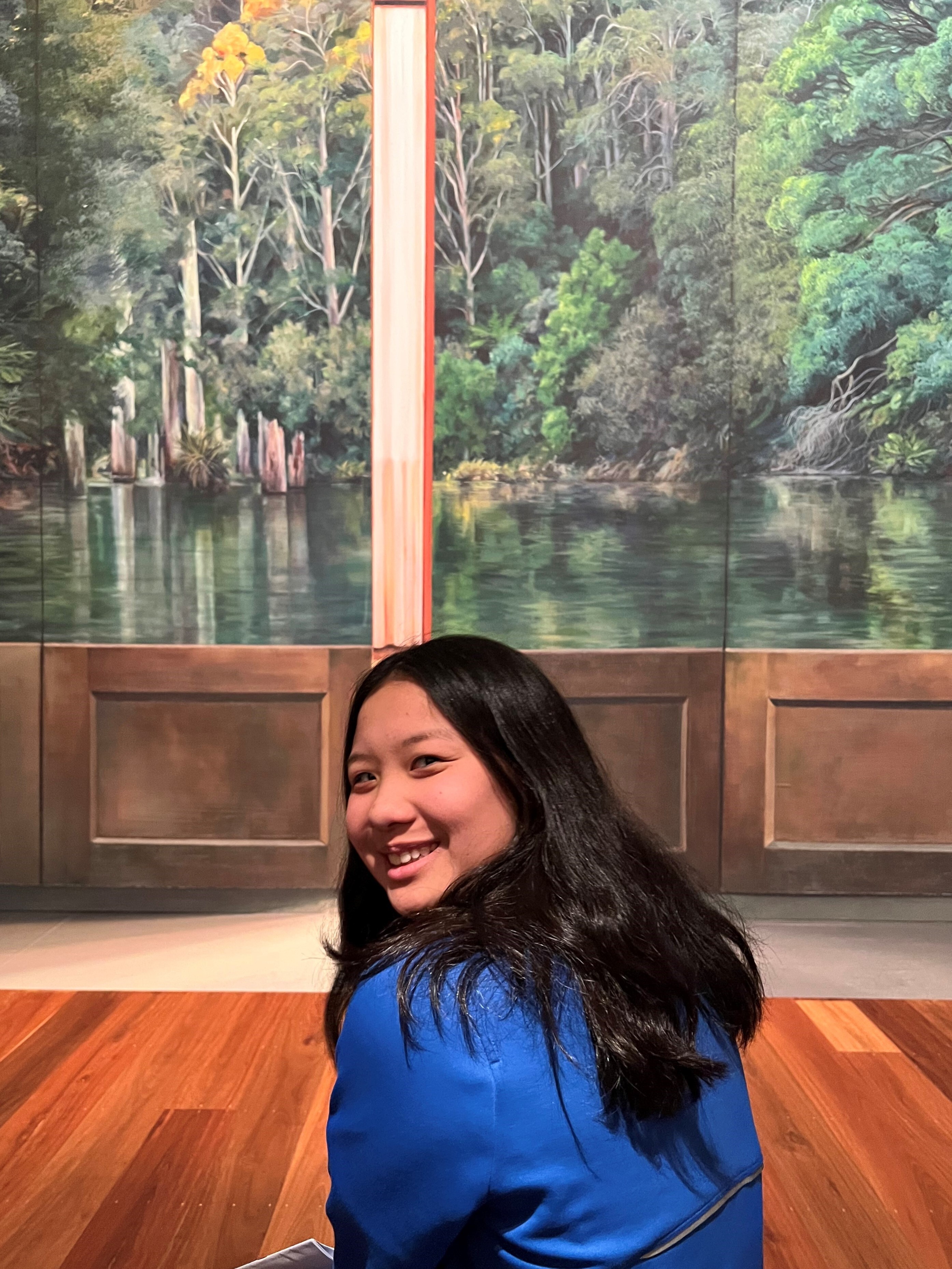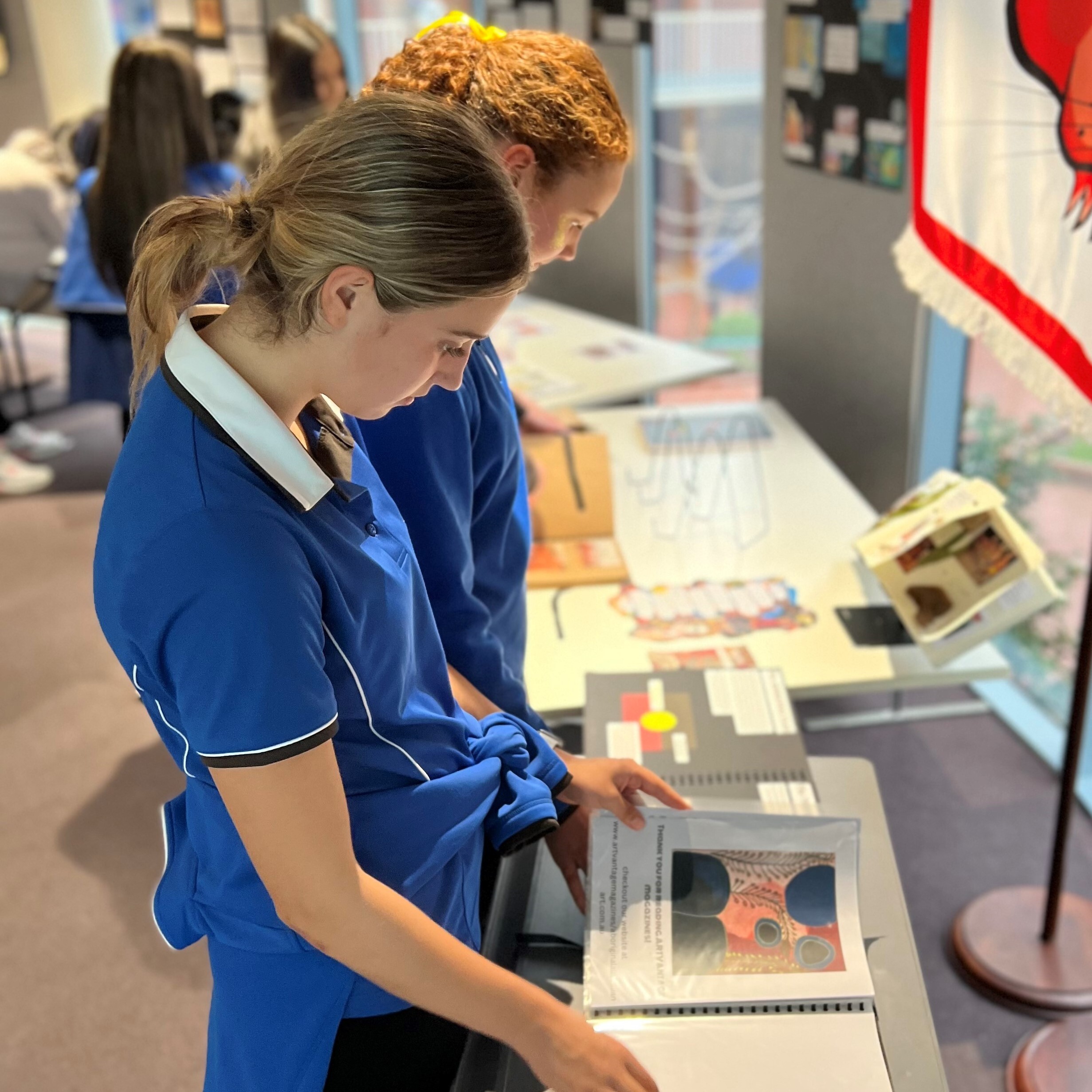The Year 9 inaugural Inquiry Unit asked our students to make connections across the curriculum in relation to Indigenous Australians and Country.
Recently, Year 9 students and Teachers gathered together in bright winter sunshine on the north banks of the river - once called Birrarung, now called Yarra - on Wurundjeri land, Naarm. Above that river, at a place that has been a meeting spot for Indigenous Australians for thousands of years, we held our gathering of curious minds.
This was our inaugural Inquiry Unit excursion to the City of Melbourne where we asked students to make connections across the curriculum in relation to Indigenous Australians and Country. The excursion formed part of a larger collaborative Inquiry Unit that began in English classrooms reading Ali Cobby Eckermann’s verse novella, Ruby Moonlight, and transitioned to the Inquiry Unit where we engaged students through “authentic learning” or real-life learning. We want our students to engage with learning meaningfully and actively – to think about what they are learning, and to ultimately create a quality outcome or artefact that they can share with others, fostering the deepening of knowledge, understanding, and even empathy.

While it was predominantly an English excursion, we were joined by Mr Woolhouse from Geography, whose knowledge of the area as a former Park Ranger for the City of Melbourne was integral to building our understanding of place and landscape. In the future, we hope to be joined also by the History Faculty as we gradually shape the day out at Federation Square into a rich and interactive broader Cross Curricular unit.
The first activity of the day was a river walk with the Koori Heritage Trust where we learned from our guide that the Yarra River was originally “Birrarung”, and that in the Wurundjeri language, Birrarung means “river of mists and shadows”. “Birrarung” was once “teeming with life” – even today we might see an eel – and that before 1850 there had been a waterfall - a “yarra” - down the river at the current site of the Aquarium.

Students were able to hold coolamons and weapons, touch possum skin cloaks and possum skin balls (also known as Marngrook) that have been used for generations to play Traditional Games.
We then meandered through the National Gallery of Victoria – Ian Potter Centre - where students were encouraged to apply Visual Thinking Strategies (VTS) to a range of artworks by Indigenous artists, or depicting Indigenous Australians and the experience of Colonisation and its consequences. This time was spent encouraging Year 9 to question and challenge their preconceptions and to consider new ways of seeing.
Finally, we sat on the banks at Birrarung Marr (which means “next to the Birrarung River”) and read some Indigenous poetry including “Municipal Gum” by Oodgeroo Noonuccal which addresses a gumtree in a city street, and “Un named” by Paul Collins which responds to Henry Lawson’s 1892 poem, ‘Stranger on the Darling’. Collins’ poem claims the Darling River has always been known to the Barkingi people as “Barka”, and while Lawson might have been a “stranger”, the Barkingi were never “stranger” to her. Students were encouraged to reflect on the landscape around them, imagine it changing over time, perhaps sketch a “Municipal Gum” “set in her black grass of bitchumen” or write their own poems. Some brave students stood on flat rocks and read their poems to the group. One very brave one shared her poem with a stranger.
It really was a marvellous day. There was an almost a festival atmosphere at Federation Square with free face painting, deckchairs to catch a World Cup soccer match, police horses to pat, and chortling magpies.

The Year 9 Inquiry Unit culminated in a special Celebration of Learning last Friday in the Doris Walker Centre. Students and teachers alike enjoyed the range of artefacts and projects that students were able to put together in their exploration of Indigenous Culture, History and Perspectives.
Student projects ranged from a fabulous coded project; an interactive board game where Reconciliation could be achieved by making one’s way to the MCG (if only it was so easy!); highly professional webpages; magazines, pamphlets, scrapbooks, a stunning collage of old newspaper texts depicting stories about early perceptions of Indigenous Australians; filmed documentaries and news programs. The work in many cases was extraordinary and the finished collection felt like a genuine gallery installation.
The Year 9 English Department has been so impressed by the ongoing engagement of students through the unit, in particular their willingness to develop their understanding and work collaboratively with others through the entire Inquiry process.
Ms Jan Bailey
Deputy Head of English